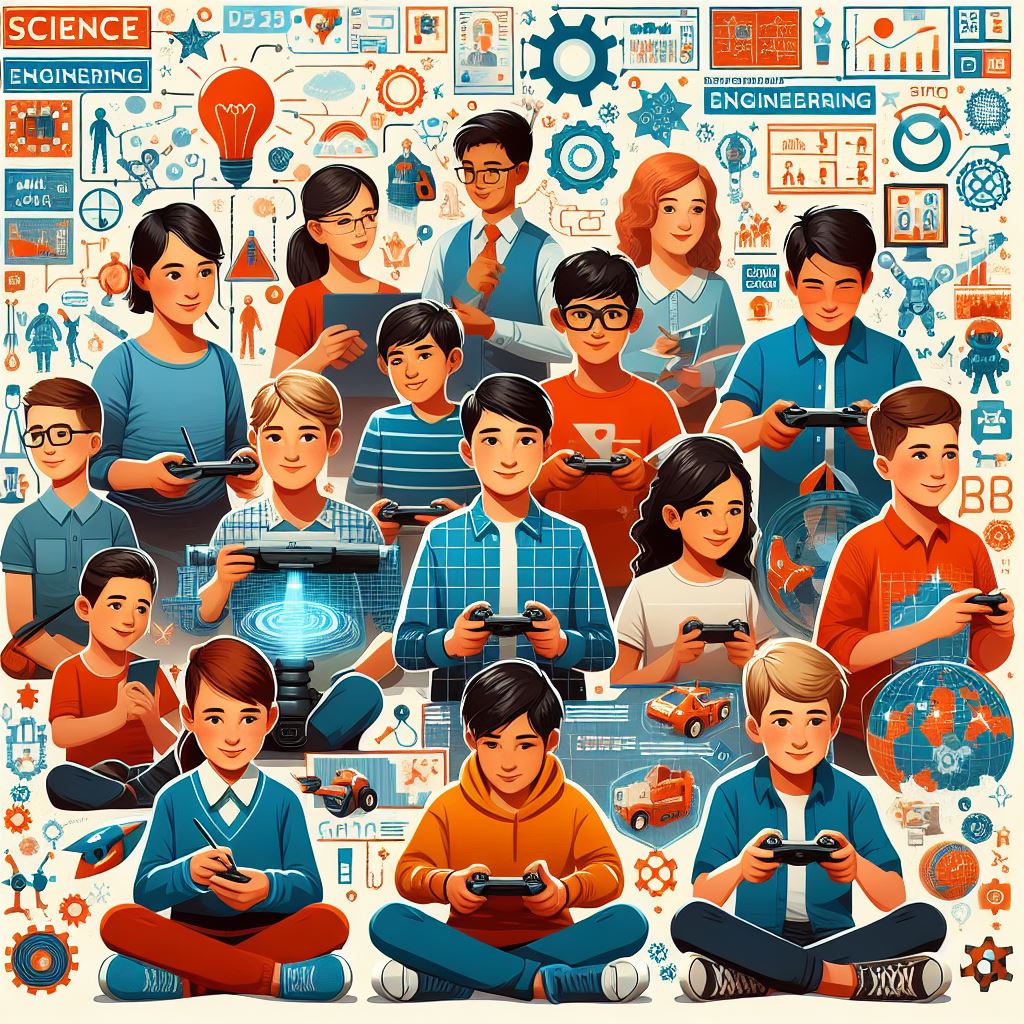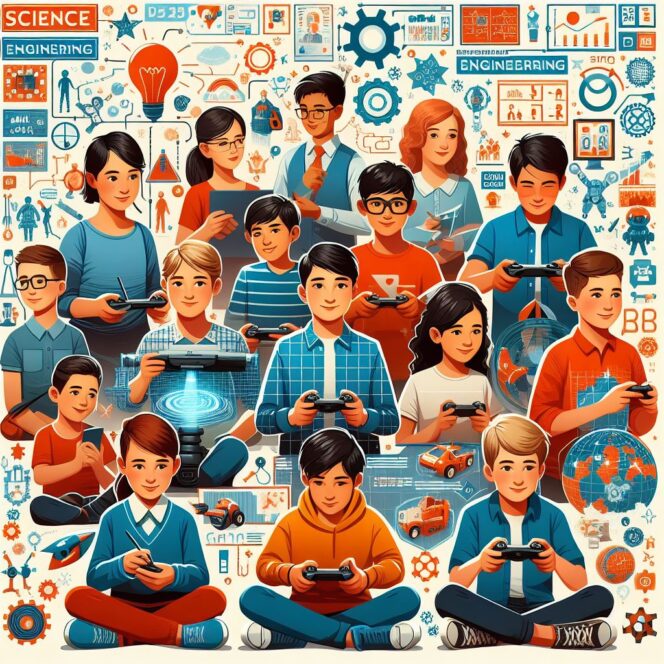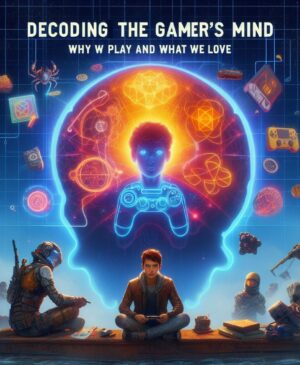STEM stands for Science, Technology, Engineering, and Math. These are the fields that drive innovation and progress in the modern world. But how can we inspire more students to pursue STEM careers? One possible answer is gaming.

Gaming is not only a popular and fun activity, but also a powerful tool for learning. Gaming can stimulate curiosity, creativity, problem-solving, and collaboration. Gaming can also expose students to various STEM topics and concepts in an engaging and interactive way. Here are some examples of how gaming can boost STEM education.
- Minecraft: This sandbox game allows players to create and explore virtual worlds made of blocks. Minecraft can teach students about geometry, physics, logic, programming, and design. Minecraft also has an educational edition that offers lessons and challenges in various STEM subjects.
- Kerbal Space Program: This simulation game lets players build and launch rockets, satellites, and space stations. Kerbal Space Program can teach students about astronomy, orbital mechanics, aerodynamics, and engineering. Kerbal Space Program also has a classroom edition that provides curriculum and activities for teachers and students.
- Portal: This puzzle game challenges players to use portals to navigate through a series of test chambers. Portal can teach students about spatial reasoning, physics, logic, and critical thinking. Portal also has a level editor that allows players to create and share their own puzzles.
- Foldit: This online game invites players to fold proteins into different shapes. Foldit can teach students about biology, chemistry, and bioinformatics. Foldit also has a scientific impact, as players have contributed to solving real-world problems such as HIV, Alzheimer’s, and COVID-19.
These are just some of the many games that can enhance STEM education. Gaming can make learning more fun, interactive, and meaningful for students. Gaming can also spark interest and passion for STEM fields. Gaming can be a great way to prepare students for the future.
Conclusion
Gaming is not only a hobby, but also a learning opportunity. Gaming can boost STEM education by exposing students to various topics and concepts in an engaging and interactive way. Gaming can also stimulate curiosity, creativity, problem-solving, and collaboration. Gaming can be a valuable tool for teachers and students to explore the wonders of STEM.










No Sign-up. Play Directly.